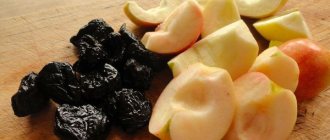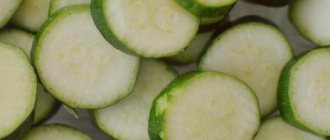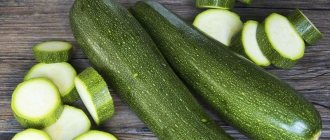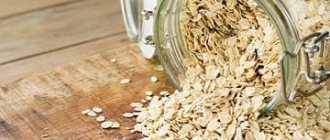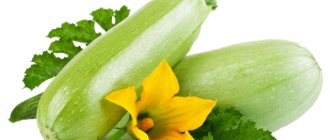And our series on different types of complementary foods ends with the topic of self-cooking. It would seem that there is nothing simpler than homemade dishes: you cook them, chop them in a blender, and serve them out. But the modern mother is not looking for easy ways, she goes to the forum and asks a lot of questions: how best to cook, what to chop, what to add, how to preserve. She also reads about scary winter vegetables that have nothing healthy in them, and then they scare her about genetically modified foods...
How to decide and choose the best for your child? Everything is very simple. If you have increased suspiciousness, and every carrot contains dangerous herbicides and genetically modified tops, feed your child with canned food. It is no more harmful than daily worry about the usefulness/harmfulness of natural products. Regarding the eternal debate about GM foods, most of the vegetables and fruits we consume have already undergone genetic changes through hundreds of years of hybridization. Scientists are constantly developing something new, adapting to the desires of the producer to grow vegetables that will be unpleasant to malicious pests. Now science has stepped far forward, and the process of genetic engineering has accelerated hundreds of times, hence the panic. Whether this is good or bad - the answer has not yet been found even by scientists who understand this better. Feed with cans, and sleep peacefully - there is nothing wrong with industrial food. In winter, do not buy imported vegetables (zucchini, cauliflower) for complementary feeding - they are absolutely overfed with chemicals for long-term storage and transportation in commercial form. There are no healthy imported vegetables and fruits in winter. With ours, too, alas, not everything is clear to the common consumer.
But if you still want to prepare complementary foods yourself - or have the opportunity to use your harvest, this collection of tips may be useful.
VEGETABLES
To make vegetable puree, choose the best looking vegetables without spots or cracks. For the first complementary feeding, use vegetables that do not contain coarse fiber: zucchini, cauliflower, carrots. Mixtures of vegetables are introduced when the child has already tried all their components during the week. Vegetables should be rinsed well under running water - if you are in doubt about the quality of water, use boiled or purified water. Try not to cook vegetables on the stove to retain maximum nutrients. It is better to steam it or use a double boiler. Cooking in a microwave oven is acceptable, but it will dry out the vegetables - nowadays there are microwave ovens with a double boiler function. They can also be baked, in which case the loss of nutrients is minimal. When cooking on the stove, place vegetables only in boiling water. Frozen ones are under no circumstances pre-defrosted. In winter (and early spring) it is beneficial to use a variety of frosts for complementary feeding. There are many stereotypes about their usefulness, all of them are more or less debunked here:. In winter, frost literally saves you, but check their quality at least by touch, so that you don’t feel large pieces of ice inside.
Nothing is added to the very first vegetables; after a month they begin to add vegetable oil (sunflower or olive). Ready vegetables are rubbed through a sieve or modern means are used: a blender or other chopper. You should not soften the first vegetables (that is, for the first complementary foods at 6-7 months) with a fork or masher; they cannot cope with the fibers, and the complementary foods will come out undigested.
What can be added for taste: vegetable broth, a little expressed breast milk or the usual formula. Vegetables do not need to be salted. The child does not have salt receptors, this taste is forcibly imposed. Whatever taste you accustom to will be your priority in the future. If a child refuses vegetables, this does not mean that they need to be salted - it means that the vegetables were introduced too early. Each child has his own individual feeding schedule. You can start introducing vegetables at 6, 10 or 12 months, it all depends on the desires of the child himself. In the process of introducing vegetables, the main thing is not volume, but variety. If a child eats a crumb of this and a crumb of that (a spoonful of zucchini, two spoons of carrots) – great. And in terms of benefits, it is much better than those fed by force - with the release of a family choir of grandmothers or “for advertising” - the hundred grams prescribed according to the instructions.
Possible mistakes: Do not wash vegetables with soapy water. This is an unnecessary precaution. The soap is not completely washed off, and its remains are not at all beneficial for the child. Try to prepare the vegetable puree immediately before serving - and only for one time. The prepared puree should not be reheated, this will increase the loss of nutrients. What vegetables are not introduced until a year: white cabbage, beets, tomatoes, cucumbers - and greens. They are quite aggressive for the stomach, and a child up to one year old will have enough of those vegetables that can be introduced: zucchini, broccoli, cauliflower, kohlrabi, green beans, carrots, pumpkin, potatoes; closer to a year - corn, peas. Some vegetables have a hard shell, such as corn and green beans. But in a double boiler, the shell softens easily and quickly. Mashed potatoes are a heavy dish; it is advisable to mix potatoes with any other vegetables.
When to start complementary feeding?
Expanding the child’s diet and supplementing mother’s milk with other products is determined at a certain stage of development by the need for additional nutrients and energy. But there is no need to rush with complementary feeding. If the child’s mother is healthy, if her nutrition satisfies the needs of herself and the baby, and the pediatrician states the harmonious development of the child (the level of physical and mental development corresponds to age), then until 4 - 6 months he does not need additional nutrition (food supplements and complementary foods).
If a child shows a tendency to allergies, then this is also a reason to delay the introduction of new products for up to 6 months. The more pronounced the allergic reactions, the longer you should refrain from introducing new products and select them more carefully.
Over 4-6 months, the baby’s motor function of the gastrointestinal tract improves and the secretion of digestive enzymes improves. By 3-4 months, a sufficient level of protective intestinal immunity is formed, and the likelihood of food allergies decreases. The mechanism of eating also undergoes evolution: the child moves from sucking the breast to the more complex work of moving food with the tongue, chewing it, and then biting it off. The sensations of taste follow the same path.
There are sufficient reasons to refrain from introducing complementary foods early:
- Early introduction of complementary foods can reduce the intensity and frequency of suckling, and, as a result, the production of breast milk. In this case, the introduced complementary foods will not so much complement breast milk as partially replace it, which is not justified from the point of view of the child’s physiology.
- Early supplementary feeding and the transition to artificial feeding are directly related to the widespread prevalence of allergic diseases in young children.
- There is a danger of intolerance to a foreign product due to the unpreparedness of the child’s digestive system to digest a particular product.
- It is possible that the baby’s body, which is not yet ready to resist, can become infected through food.
Taking into account all of the above, in most developed countries, pediatricians are abandoning the practice of early introduction of nutritional supplements, especially solid complementary foods. A revision of the timing of the introduction of complementary feeding, adopted since 1982, has also occurred in our country. In 1999, the Institute of Nutrition of the Russian Academy of Medical Sciences published guidelines on new approaches to feeding children in the first year of life. In accordance with them, the timing of the introduction of complementary foods is shifted towards older ages by an average of 2 - 3 months.
PORRIDGE
For the first complementary foods, take low-allergenic cereals: rice, buckwheat or corn. Corn porridge is the heaviest, so in homemade conditions it is better to take rice or buckwheat. Rice is washed not with cold, but with warm or hot water, then the starch will separate. The cereal is ground in a coffee grinder to flour and boiled in water. In principle, you can grind ready-made porridge, but in this case, vitamins and microelements are lost much faster. Cereals (the resulting cereal flour) are placed only in boiling water; ideally, they are not cooked until tender, but are left to swell. Otherwise, there is a chance that it will continue to swell in the child’s stomach.
To properly prepare healthy porridge, you need to maintain the ratio of water and cereal. Do not add water during the process. All porridges - except buckwheat and rice - are stirred during the process. For the first complementary feeding, make liquid porridge: a teaspoon of cereal (cereal flour) per 100 ml of water. After 1-2 weeks, the amount of cereal is doubled. Cow's milk is not added to porridge until a year, only a little breast milk or formula immediately before serving, and a month after introduction - butter (3 g). Sugar or fructose are not needed. Acceptable additives: fruit puree; closer to the year, ground dried fruits, pumpkin, and carrots are added to the porridge.
When the child has tried all three types of low-allergenic cereals, mixtures are made from them. At 10 months you can try oatmeal; other gluten-containing cereals in homemade complementary feeding are introduced no earlier than a year. At home, whole grains cannot be processed perfectly; they will still be heavier than children's instant cereals in boxes, so it is better to postpone all deadlines. Semolina porridge is not introduced until two or three years of age; recently, experts agree that this porridge is more intended for fattening, rather than feeding. Semolina contains 70% starch, proteins and very few vitamins and microelements. And also phytin, which binds calcium salts, that is, it prevents calcium from entering the blood. When there is little calcium in the human body, the parathyroid glands “remove” it from the bones and send it into the blood. All porridges, one way or another, bind calcium - which is also why they are recommended to be introduced after vegetables and meat. But semolina tries harder than anyone, having a pronounced “ricketogenic” effect, it contributes to the formation of rickets in children in the first two years of life.
Is it possible to grind flakes rather than whole grains for the first complementary feeding? Flakes are flattened grains that have been steamed. The grain is not only flattened, but also sliced, kept under infrared rays, and dried. Grinding the flakes will make a poor porridge. Small flakes (“Nordik” or any others marked “small”) are introduced after 10-11 months in the usual form, the child is quite capable of digesting them if he has not previously had problems with digestion of food.
Canned or natural?
One can argue endlessly about the need and usefulness of canned and natural nutrition. But the priority remains convenience for mom. If you prefer to feed cans and boxed cereals: feed, and don't look back. The only thing you need to pay attention to is: read the ingredients. For the first complementary feeding, food that does not contain unnecessary additives (sugar, salt, spices, milk or cream) is suitable. While doctors don’t have a common opinion about canned food, almost everyone agrees on the benefits of commercial porridges. They are easy to use and will be easier for your baby to understand. Not every mother has time to grind cereal in a coffee grinder. In addition, children's cereals are additionally fortified. A child can choose to eat them at least up to three years of age.
Of course, canned food contains fewer vitamins than natural food, because... is boiled down. Sterile. That is why it is stored for a long time. There is simply nothing to reproduce there in sterile conditions. But after opening, the jars are stored for no more than a day. Baby cereals are used only 3-6 weeks after opening; they quickly become enriched with harmful microorganisms from the air.
It happens that complementary foods need to be introduced in late autumn, winter or early spring, when all vegetables and fruits are pumped with chemicals. Fresh vegetables and fruits are rich in vitamins only in “their” season. Several months of storage - even with compliance with all standards, which, unfortunately, is extremely rare - and besides fiber and starch, little remains in them. In winter conditions, complementary feeding begins with canned vegetables. It is better to use a canned zucchini than an imported zucchini and a canned pear rather than a “conference” shiny with paraffin. They provide only canned meat; you will not find environmentally friendly meat for the first complementary feeding (and for the second and third) anywhere. Unless you live in a village and are absolutely confident in meat from your own rabbits - or trusted friends will give you a gift.
“Canned food – it remains to be seen whether acid rain is watering their fruit! And your natural diet contains a lot of nitrates! And in your jar there is modified starch, here! And your “rejuvenating” apples with paraffin…” Trust your intuition! Don't get involved in squabbles. Feed your baby the way you feel comfortable and what feels right to you.
* When indicating the recommended age on the packaging, baby food manufacturers act exactly according to the instructions, and they have not changed since 1997. There is no need to blindly trust the picture when buying all juices for a 4-month-old child with the indication “from 4 months”. Some foreign manufacturers come across bizarre compositions of canned food recommended for children under one year old: here there is pasta with meat, and spices. In a word: if mom is a person, she must have a head. And if she has a head, she should have smart thoughts: what SHOULD be given to her child, and not what was recommended 11 years ago according to instructions designed for artificial children.
Expert comments
Natalya Kustlivaya, chief physician of the non-profit organization “Mom + Baby”:
It seems to me that the problem “banks are not banks” is far-fetched. The main reason why you need to prepare fruit purees and juices yourself is vitamins. They are the first to be introduced into a child’s diet to correct vitamin and mineral deficiencies, which can develop in artificial babies by five to six months and after six months in breastfed children. It is known that all canned foods undergo heat treatment, during which vitamins are destroyed. Thus, vitamin C oxidizes upon mere contact with air, even without exposure to heat.
In addition, prepared fruit juices and purees may be subject to additional processing to remove nutrients that can cause allergic reactions. Take, for example, the Peach-Passion Fruit puree: a four-month-old baby may be allergic to exotic passion fruit. Therefore, manufacturers, hedging their bets, often dilute the product. Of course, you can use canned fruit purees and juices, but only in exceptional cases, for example, when traveling or visiting, when it is impossible to prepare complementary foods under aseptic conditions.
Homemade juices and purees should be given within 10 minutes after preparation; later the process of oxidation of vitamin C begins and it is destroyed.
A completely different matter is vegetables, which we value for minerals (iron, potassium, magnesium), fiber, and dietary fiber. Factory processing does not affect their content. The decision is up to the mother - let her do whatever is more convenient for her. You can cook from frozen vegetables, but at the same time check whether genetically modified components are used.
Most pediatricians are against feeding small children meat from the market. There are a number of diseases that have become known in the last few years. For example, borelliosis is a disease caused by tick bites, which also affects livestock. Moreover, if examination for tick-borne encephalitis is carried out free of charge, then examination for borelliosis costs money. It is clear that private farms are in no hurry to do this. Meat for canned baby food undergoes veterinary control.
The main thing is to pay attention to the age for which the food is intended. There is no need to be afraid of supplements: the same salt is officially recommended starting from seven months, and there is nothing wrong with that. Additives such as pectin or starch are also safe - these are complex carbohydrates that only promote digestion. If we talk about porridges, then, in my opinion, factory-made porridges, which only need to be diluted with warm water or milk, are preferable. Cereals are valuable not only for dietary fiber and complex carbohydrates, but also for vitamin B, which is destroyed during cooking.
Elena Marushenko, pediatrician at the Health Clinic:
In the debate about which complementary foods are better to give to the baby - ready-made in jars or homemade purees, I will not categorically deny either one or the other: it all depends on the time of year. If you are going to make puree from vegetables and fruits that you have grown yourself, then from July to January you can safely feed your baby with it. Of course, a lot depends on storage conditions, but, as a rule, starting in January, there is nothing left in our vegetables and fruits: for example, after six months there is nothing useful in potatoes except fiber. Therefore, from January until the first harvest, you can and should give canned complementary foods. You can, of course, make mashed bananas, but you should think about the feasibility - after all, it is known in what form bananas are plucked from the tree. And, by the way, it is very difficult to squeeze juice out of beautiful imported apples. If you are prejudiced against jarred purees, then buy frozen vegetables and fruits - vitamins are preserved there to a greater extent. In my opinion, freezing from domestic producers is preferable.
(source: www.eda-life.ru)
!It is important! Until the age of three, a child receives food intended only for children. All products must be marked “for baby food.” Pay attention to this. Very often sellers mislead the buyer. For example, on 0.5 packs of “children’s” juice, which is in a row of children’s juices, you will not see the inscription “for children from so many months.” This is NOT a children's juice because it cannot be sold in such a large package. Manufacturers of children's curds are also disingenuous. If you are still buying 100-gram packs of cottage cheese, read for interest whether they indicate “children’s” or “for children.” For example, our local cottage cheese “Mu” is for children only in 50-gram packages. One hundred gram “Mu” contains a “curd product”, and it is NOT for children, and in principle it is NOT cottage cheese.
FRUITS AND JUICES
The introduction of fruits begins with green apples and pears. It is advisable to find your own native fruits, such as Semerenko, Kuban Champion or Antonovka apples. They are more sour (and much healthier) than imported ones, and the acid is “knocked down” by baking. Most imported fruits ripen along the way, being picked unripe, this already depletes their composition, not to mention the chemical additives to preserve their appearance. Fruits for import are grown separately and under special conditions - those plantations that pass by buses on vacation over the hill are purely for their own. Do not use apples with dark (black) spots for complementary feeding; one such spot indicates a loss of vitamins by a third.
Apples and pears are given fresh, scraped, or baked; the acidity of the baked fruit decreases and the amount of pectin, a beneficial substance that removes toxins, increases. How to bake: peel, cut into pieces and remove the pitted part. Or bake the whole thing: add a little water to the container, cover loosely with foil and bake at 200 degrees for 20 minutes, time depending on the type of oven and the number of apples. You can also “bake” in microwaves for 2-3 minutes, while the fruit is covered with cling film.
The fruit is made into a puree, offered as an afternoon snack, then added to porridge or cottage cheese - or left as a separate dish. They also give out fruit in pieces; in this case, make sure that the child does not choke. Fruits need to be peeled and pitted. The peel is peeled not only because it may contain paraffin residues, but the peel is too hard, it simply cannot be digested. Banana is introduced next after the green fruit; it is fibrous and starchy, so it should be chopped with care. Peaches, apricots and berries are tasted last. The berries contain a lot of fiber, tiny seeds, they can cause serious intestinal upset, hence the moral: the norm of berries for a child is exactly as much as he can hold in his handful, and that’s a lot.
Freshly squeezed juices are introduced no earlier than one and a half years and only in a diluted form (50:50).
MEAT
Meat is a heavy product, it takes a long time to digest, so there is no need to rush to introduce it, especially if the child is breastfed. Begin adding meat puree with half a teaspoon. You can give this dose for three days and monitor the reaction. It is advisable to immediately mix the meat with vegetable puree (for best absorption). Just add meat to the puree little by little, gradually increasing the dose.
For the first feeding, rabbit, lamb, and turkey meat are ideal. Veal, pork, chicken and red fish are introduced after a year. At 10 months, the child can be offered meatballs, and after a year - steamed cutlets. Meat broths are not used in children's diets; they contain harmful substances boiled from meat. The broth has the ability to be quickly absorbed into the intestines; the children's liver is not able to filter out all carcinogens. The kidneys also suffer: due to the huge amount of salts, urolithiasis can develop. Therefore, before cooking, the meat must be separated from the bones, the finished dish should not be filled with the remaining meat broth, and when cooking the soup, the meat broth is half diluted with water - or the prepared pureed meat is added to the vegetable soup.
Home cooking method: the meat, passed through a meat grinder twice, is steamed until cooked (depending on the meat itself, the process may take different times). Or the already cooked meat is passed through a meat grinder (blender, mini-processor). The minced meat is rubbed through a strainer (or a blender). Steam cooking method: add water to raw minced meat (the more water, the more tender), put it in a deep bowl and place it in another bowl with boiling water. Cover with a lid and cook for 10-15 minutes. Non-steam method: cook the meat for 20 minutes, then drain the broth, add hot water a second time - and cook until done. Do not salt the meat puree under any circumstances – there is already plenty of salt in meat.
Meat contains a lot of coarse fibers; at home it is impossible to turn it into an easily digestible dish. And in stores it is difficult to find meat for the first feeding, which can be considered healthy in composition. Therefore, homemade is homemade, but jarred is still better, especially up to a year.
Administration scheme
The main rule of complementary feeding is gradualism. The product is given in small quantities daily, at the same time of day. A week is allotted for the introduction of each vegetable and another week for the child to adapt to the new product. The daily volume of vegetable puree before a year is 150 g, after - 200 g.
- 1 day - 5 g (1 tsp);
- Day 2 - 10 g (2 tsp);
- Day 3 - 15 g (3 tsp);
- Day 4 - 20 g (4 tsp);
- Day 5 - 50 g (10 tsp);
- Day 6 - 100 g (20 tsp);
- Day 7 - 150 g (30 tsp).
After 2 weeks, you can begin to introduce another type of vegetable into the child’s diet according to a similar scheme.
Recommended age for introducing basic vegetables into complementary foods
| Child's age | Product |
| 4-6 months | |
| 4-6 months | |
| 4-6 months | |
| 6-8 months | |
| 6-8 months | |
| 6-8 months | |
| 8 months | |
| 9 months | |
| 9 months | |
| 12 months | |
| 12 months | |
| 12 months | |
| 12 months |
The data given in the table are approximate values.
FISH
Boil the fillet in a small amount of water for 15-20 minutes, cool, pass through a meat grinder, and then grind with a blender. For baby food, you need to buy only fillets of low-fat fish (hake, cod, pollock). It is better to thaw in salt water to reduce the loss of minerals during defrosting. It is not recommended to completely defrost the fillet. Slightly thawed fish is washed in cold water and subjected to heat treatment, which, unlike meat, should not be too long. Place the fish only in boiling water, after which the heat is immediately reduced.
SOUR MILK
Homemade kefir
Method 1. The starter can be pharmaceutical bifidumbacterin, lactobacterin, “Narine”, “Evita”, or ready-made store-bought biokefir, acidobiphilin and any “live” yogurt. Add the starter to a liter of warm milk, close the jar with a tight lid, wrap it in a terry towel and send it to a warm place (for example, to the bathroom - it’s always warm there) for 6-10 hours. When a kefir clot forms, place the jar in the refrigerator for a few more hours.
Method 2. Boil half a liter of milk, cool to 35 - 36 degrees (so that you can safely hold your finger in the milk) and add 5 - 6 tablespoons of old kefir to it. Stir, wrap the bottle in a blanket and leave for 5 - 6 hours in a warm place, and then keep in the refrigerator for several hours. If instead of old kefir you add yogurt to milk, the taste of the drink will be slightly different. If you don’t have any old yogurt or kefir at home, you can use a piece of black bread as a starter.
Homemade cottage cheese
Method 1. Kefir cottage cheese (fermented milk) is easier to digest and assimilate. To prepare it, pour kefir into an enamel saucepan (mug) and place on the lowest heat. When a clot forms on top, place it on a sterile gauze pad to drain the whey.
Method 2. Calcined cottage cheese is prepared by adding a solution of calcium chloride to cold pasteurized or boiled milk; it is sold in pharmacies. The amount of calcium chloride in all recipes is different, there is this one: to get 100 g of cottage cheese, add 1.5 teaspoons of calcium chloride to 600 ml of milk. Another recipe: bring milk to a boil and remove from heat. When it has cooled a little, add calcium chloride dissolved in a small amount of boiled water with continuous stirring, cool the curdled milk, strain through cheesecloth, and allow the whey to drain. Per liter of milk – 1 tbsp of calcium chloride. Well-known in forum circles, pediatrician Natalya Rashidovna Vasilyeva (Rusmedserver, and other forums) recommends the following recipe: for 1 liter of cold raw milk, 1 ampoule (10 ml.) 10% calcium chloride - pour in - boil - cool - strain through a sieve or gauze - calcined the cottage cheese is ready.
There is an opinion that it is better not to give such cottage cheese to a child; in fact, this recipe came to us from veterinary medicine; cottage cheese made from calcium chloride is given to baby animals. At the very least, calcined cottage cheese should not be given every day. It can taste noticeably bitter, and its consistency is not suitable for first feeding. Try it and form your own opinion.
Method 3. Boil milk, cool to body temperature. Add the starter, previously shaken in a small amount of the same milk. This is for its even distribution. Place in a warm place for a day or two. In this case, it is better to stir it, disturb it several times during fermentation. Then heat it in a water bath, rather than just putting the pan on the fire. The higher the heat, the more casein coagulates. If you heat it over a fire, it can curl into such nasty-hard lumps, that is, it will be a very dry and hard cottage cheese. And for tender cottage cheese you need to warm it up very carefully, in a water bath. Then cool and discard: put gauze in a colander, pour the previous semi-finished product into it, wait until the whey drains, and then collect the ends of the gauze on top and begin to twist to squeeze out the whey. For greater density, you can then put this bag in a colander, pressing it down with a weighted board on top.
Method 4. Take the most low-fat milk that is on sale. Pour it into a large bowl or pan. Squeeze lemon juice into the milk (for each liter of milk - from half to a whole lemon). You can also use ready-made lemon juice or diluted citric acid. Pour boiling water from the kettle into a saucepan with milk and lemon juice. There should be about the same amount of boiling water or even a little more than milk. Stir calmly and watch with interest as the milk curdles before your eyes and the whey begins to become transparent. Do not wait until the milk clots become dense. This will give your curd an unwanted graininess. Use a spoon with holes to catch the tender clots and place them in another bowl. A little more whey may come out, so you pour it off. All.
Method 5. 4 glasses of sour milk, 2 glasses of fresh milk. Boil fresh milk and pour it into a vessel with sour milk. Mix thoroughly and leave to cool. Once the mixture has cooled, pour it into a sieve and strain through a fine sieve.
How to store homemade puree
Knowledgeable people loudly say: there is no need to store ready-made vegetable (meat and vegetable) purees. These are dishes with a broken structure; ideally, they are prepared strictly for one meal. At home, it is impossible to provide shock freezing - beneficial substances are inevitably lost. You need to freeze whole (cut) vegetables and fruits, and then puree them. Vegetables are stored at a temperature of - 6°C for a week, at - 12°C for 1 month, at - 18°C for 3 months.
But still, sometimes there is a need to freeze meat or vegetable puree. One simple way: fill the ice container and put it in the freezer. Do not freeze hot or warm food; it must be cooled first. Once food is frozen, immediately place it in an individual plastic bag. Don't forget to label and date when you did it. In this form, the puree can be stored for 3-4 weeks at a temperature no higher than -18. Never refreeze food.
Freezing cottage cheese at home is not recommended, since such freezing is slow, which significantly disrupts the protein structure and deteriorates the taste and other qualities of the product. As an exception, this can only be done in freezer compartments with two and three stars on the lid or in freezers with a temperature of - 18°; Cottage cheese should be stored in such conditions for no more than two weeks.
How to reheat frozen food: Transfer it to a suitable container and place it in a pan of boiling water, stirring occasionally. You can also use heating in the microwave. Food should be well heated, never warm. Do not reheat food more than once; any remaining food should be thrown away.
Where to start?
Previously, complementary feeding began with juices and fruits. Now experts advise introducing vegetables or cereals into your baby’s diet, and only then fruits. This is explained simply: fruits are sweeter. And a child, having become acquainted with a sweet product, can then refuse more bland ones. If complementary foods are introduced after six months, it doesn’t really matter whether you started with porridge or vegetables. Your choice. Traditionally, vegetables are introduced first. If a child has previously had prolonged colic or diathesis, doctors recommend starting complementary feeding no earlier than six months and only with cereals. Vegetables and fruits have a stronger effect on the microflora and can cause colic and bloating. For the first two months, only monocomponent (consisting of one component) products are introduced, then they can be mixed.
